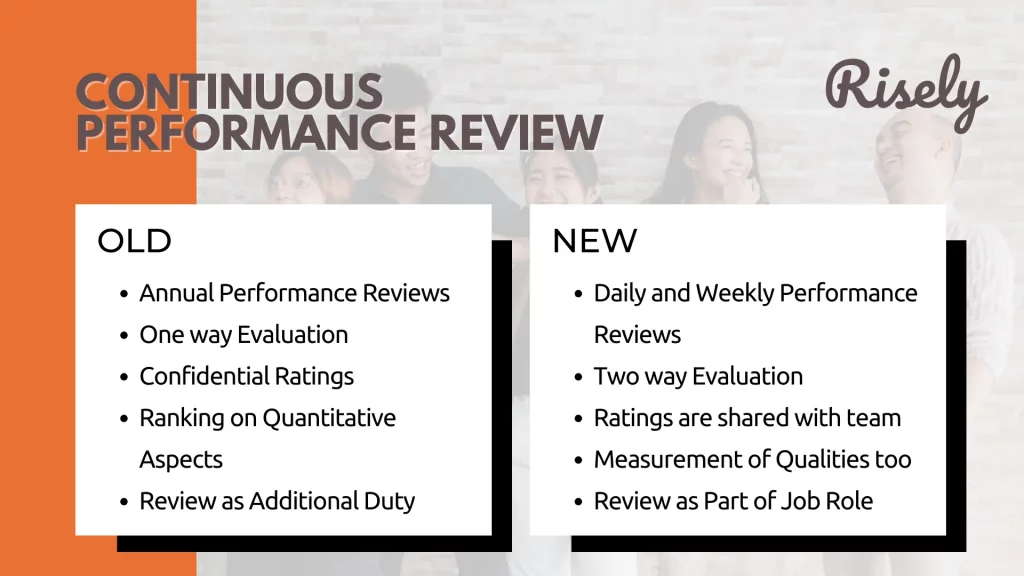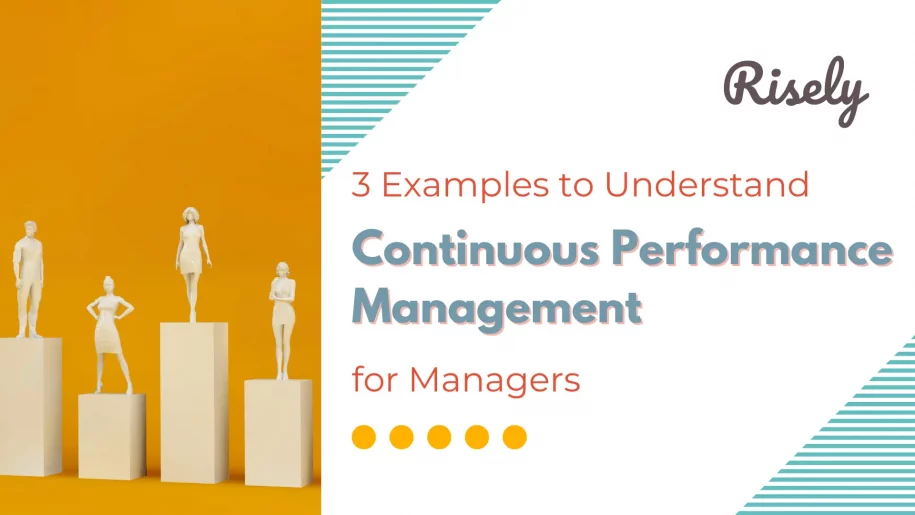3 Examples of Continuous Performance Management for Managers
As a manager, you are responsible for ensuring that your team works at their best to achieve their goals. But how do you ensure your team performs at their highest level? This is where continuous performance management comes in. Continuous Performance Management is a process of setting goals, providing regular feedback, and conducting performance reviews throughout the year instead of just once a year. This blog post will explain Continuous Performance Management and why it’s essential for managers. We will also discuss the process of CPM and delve into the case study of Deloitte’s successful implementation of CPM. Lastly, we’ll share some best practices for effective CPM implementation and real-life examples of successful continuous performance management systems used by Google, Amazon, and Netflix.- 3 Examples of Continuous Performance Management for Managers
- What is Continuous Performance Management, and Why is it Important for Managers?
- Examples of Continuous Performance Management in Action
- The Benefits of Continuous Performance Management for Managers and Teams
- The Process of Continuous Performance Management in Teams
- The Case of Deloitte: How They Perfected Continuous Performance Management
- Conclusion
What is Continuous Performance Management, and Why is it Important for Managers?
Continuous performance management is essential for managers as it enhances employee engagement and development. By setting goals, providing regular feedback, and aligning individual performance with company objectives, managers can support employee growth and improve productivity. Effective performance management also contributes to higher retention rates and overall organizational success. Read more: Performance Management 101 for Leaders: 5 Steps to Ace the ProcessUnderstanding the Concept of Continuous Performance Management
Continuous performance management revolves around providing frequent feedback and coaching to employees. Unlike traditional performance appraisals, it emphasizes real-time feedback rather than waiting for the end of the year. This approach involves regular check-ins and open communication between managers and staff members. Organizations need a performance management process that can document and track progress to implement continuous performance management. The goal is to create a culture of continuous improvement and personal development, where employees receive daily feedback and have the opportunity to enhance their performance.Examples of Continuous Performance Management in Action
Example 1: Google’s “Objective and Key Results” (OKR) System
Google’s “Objective and Key Results” (OKR) system exemplifies the power of setting ambitious goals and critical results to drive high performance. Through regular check-ins and progress updates, managers ensure alignment and accountability. Continuous feedback and coaching support the growth and development of employees. Transparency and visibility of goals and progress throughout the organization foster a sense of shared responsibility. Moreover, data-driven decision-making based on performance metrics and outcomes enables strategic course corrections for improved results. By incorporating these practices into their continuous performance management process, Google has established a culture of excellence and achievement.Example 2: Amazon’s “Anytime Feedback” System
Amazon’s “Anytime Feedback” system enables employees to receive real-time feedback from colleagues and managers, fostering a culture of continuous improvement. This system facilitates ongoing conversations and discussions about performance, promoting individual development and growth through timely feedback. By encouraging open communication and collaboration across teams, Amazon’s “Anytime Feedback” system ensures that feedback is available at any time, allowing employees to address areas of improvement promptly. This process supports employees’ personal development, ultimately contributing to the overall success of the workforce.Example 3: Netflix’s “Keeper Test” for Employee Retention
Netflix has implemented a unique approach to employee retention known as the “Keeper Test.” This method evaluates employees based on their impact and contribution to the organization. By regularly assessing employees’ potential and future value to the company, Netflix can identify and retain top performers through ongoing evaluation and feedback. It helps foster a high-performance culture and rewards exceptional talent. Netflix’s continuous performance management process focuses on the bottom line, ensuring the workforce is optimized for success.The Benefits of Continuous Performance Management for Managers and Teams
- Clarity and alignment: Continuous performance management promotes clarity and alignment in expectations, enhancing employee engagement by involving them in their development.
- Psychological safety at work: Regular feedback and support improve team members’ performance, fostering a culture of open communication and psychological safety. This approach leads to improved team performance and bottom-line results.
- Up-to-date development support: By implementing a continuous performance management process, managers can provide frequent feedback, create a continuous feedback system, and support the personal development of employees.
- Proven Impact: Organizations like Adobe, Gallup, General Electric, and others have seen the positive impact of continuous performance management on their workforce throughout the year.
The Process of Continuous Performance Management in Teams
Setting Goals and Expectations
Setting clear and measurable goals that guide performance is the starting point for a practical continuous performance management process. These objectives should be aligned with the team’s and organization’s overall objectives, helping foster a sense of cohesion and direction. In addition to setting goals, managers must establish clear expectations to ensure that employees understand their expectations. Regularly reviewing and adjusting goals can help to stay on track and adapt to changing circumstances.Providing Regular Feedback and Support
Managers play a crucial role in continuous performance management by providing timely and constructive feedback to help employees improve. It fosters a culture of ongoing learning and development within the workforce. Offering support and resources further encourages employee growth and success. Regular check-ins allow for course correction and extra support, ensuring employees receive the necessary guidance and feedback for personal development.Conducting Performance Reviews
Performance reviews offer a formal opportunity to assess employees’ progress and provide constructive feedback regarding their strengths and areas for improvement. It is essential to conduct performance reviews regularly, ideally quarterly or semi-annually, to ensure consistency and fairness in the evaluation process. By documenting the review process, managers can maintain a continuous feedback system and identify any training and development needs for their workforce. Performance reviews play a crucial role in employees’ personal development, helping them enhance their performance and contribute effectively to the organization’s goals.The Case of Deloitte: How They Perfected Continuous Performance Management
Deloitte, a renowned professional services firm, replaced traditional performance reviews with a continuous performance management strategy. This new approach focused on frequent check-ins and continuous feedback, fostering ongoing conversations and alignment with company goals. By implementing this system, Deloitte successfully improved employee engagement and development. Their case serves as a testament to the benefits of continuous performance management. It demonstrates the importance of shifting away from formal reviews towards a constant feedback system that prioritizes employees’ personal development.Key Components of Deloitte’s Performance Management Strategy
Deloitte’s performance management strategy revolves around fostering continuous feedback and coaching.- Emphasis on feedback: Managers at Deloitte are encouraged to engage in regular one-on-one conversations with their direct reports, emphasizing the importance of employee feedback and growth. This strategy aims to cultivate a culture of ongoing improvement and personal development within the workforce.
- Alignment across levels: By aligning performance goals with company objectives, Deloitte seeks to achieve better performance outcomes. The continuous performance management process at Deloitte ensures that employees receive frequent feedback and support throughout the year, leading to enhanced performance and development.


